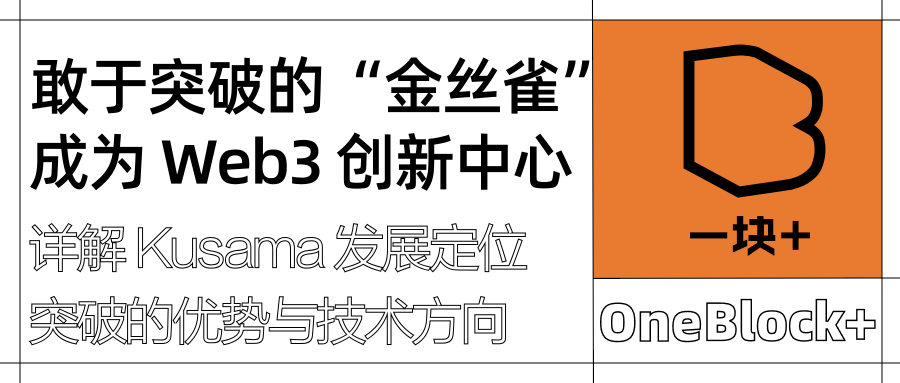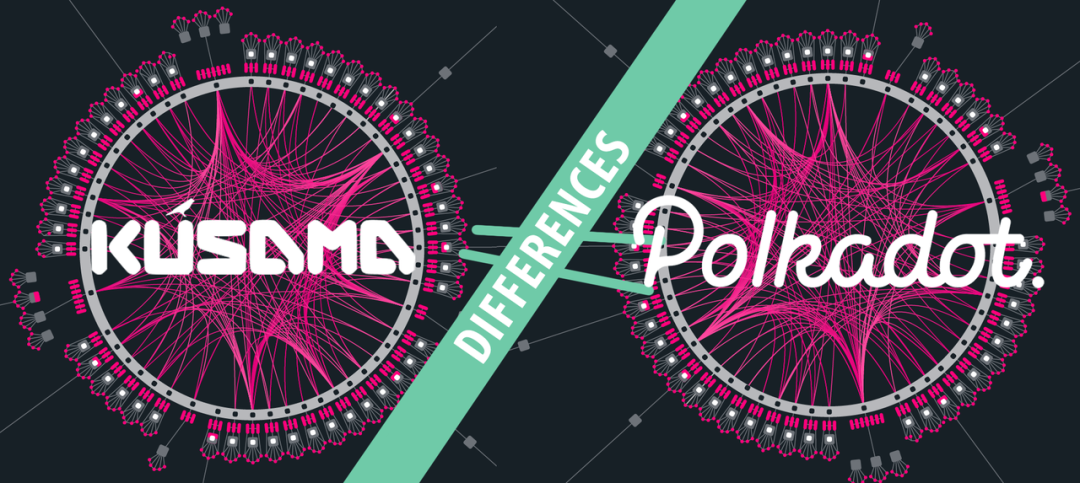
As the founder of Polkadot, co-founder of Ethereum and proponent of the Web3 concept, Gavin Wood started his Asia tour this year with his latest technological achievement, JAM (Join-Accumulate Machine) , and also accepted exclusive interviews from many media. Recently, Gavin Wood mentioned the topic of the future development of Kusama in an interview. He believes that Kusama was originally designed as a "canary" test network for Polkadot , and its main purpose is to provide a test site for Polkadot's new features and upgrades to verify its feasibility and stability.
Just last week, Parity announced that Polkadot will natively support Ethereum smart contracts and plans to launch it first on Kusama. After this upgrade, developers can directly deploy and run Solidity v0.8.0 and higher contracts on Polkadot , eliminating the need for additional middle layers. This will not only lower the entry barrier, but will also accelerate the implementation of applications and significantly enhance Polkadot's position in the blockchain competition landscape.
Kusama: The canary that dares to take risks
At present, Kusama has completed its mission relatively successfully. However, Kusama already had 10 million DOTs at the time of its creation. How to achieve breakthrough innovations in the original positioning based on the existing achievements and make rational use of project technical resources to support future development is worth our exploration and deep thinking. Before we are ready to explore Kusama in depth, let us re-understand Kusama.

Kusama was founded in 2019 by Gavin Wood, founder of Polkadot and co-founder and former CTO of Ethereum. It is a scalable private blockchain network built with Substrate, and its code base is almost identical to Polkadot . As an experimental development environment, it is suitable for developer teams that want to move quickly, innovate on Kusama, or prepare to deploy on Polkadot.
Kusama's sharded blockchain and open governance provide a scalable and future-oriented infrastructure for the deployment and maturity of enterprises, markets, and applications. It can integrate multiple blockchains into a single sharded network, freeing developers from the silos created by traditional blockchain networks. Developers can use Substrate to build their own application-specific blockchains and connect them to Kusama. In this regard, industry insiders have jokingly called the emergence of Kusama a "canary in the coal mine" created for Polkadot that dares to take risks and act quickly. It is an active platform built for change agents, aiming to take back control, stimulate innovation, and disrupt the status quo.
The structural advantages of Kusama, a high-performance network pioneer
At the end of February this year, the Wish For Change proposal referendum 498 proposed by the Web3 Foundation planned to allocate 10 million DOTs from the W3F treasury to Kusama to build it into a leading center for Web3 technology. At the same time, the referendum clearly stated that it would focus on the development of zero-knowledge (ZK) innovation, art, identity authentication and other fields , actively helping Kusama transform from a simple test network to a true technology innovation center.
There are three major development visions in this referendum:

Supporting cutting-edge technology development:
Providing funding and support for the latest technology experiments and innovations
Transformation to a peer-to-peer network:
Kusama will no longer be just a “canary” for Polkadot, but an independent, free peer-to-peer network
Community-driven funding support:
For at least the next 24 months, Kusama funding will be driven by the community, and the funding projects will cover a variety of technical and creative projects from ZK rollups to DAOs.
It can be seen that from the direction of this referendum and future development plans, Kusama's positioning has shifted from the original "network support" to the "innovation center" . In fact, this is inseparable from Kusama's own technical advantages and strategic direction.
Flexible modular architecture based on Substrate framework
Kusama is based on the Substrate blockchain development framework, which can support developers to quickly build customized parallel chains through modular application components (such as consensus algorithms, governance modules, smart contract engines, etc.), truly achieve the ability of "one-click chain launch", and give developers higher development efficiency and performance experience . At the same time, through on-chain governance and Runtime upgrade mechanisms, protocol updates can be completed on Kusama without hard forks, ensuring the continuous iteration capability of the network; with the help of the XCM (cross-chain interoperability protocol) standard, Kusama can also support seamless interaction of assets, data and smart contract calls between parallel chains , thereby building a communication infrastructure for heterogeneous multi-chain networks.

Consensus and governance mechanisms for rapid decision-making and efficient response
In addition to the technical features of the operating structure, Kusama adopts the Nominated Proof-of-Stake consensus mechanism and achieves a balance between decentralization and efficiency by dynamically electing validator nodes. For example, the scale of Kusama's validators has reached about 900 nodes, which can provide relatively high technical security while maintaining a block speed of about 6 seconds.

It is worth mentioning that Kusama's initial governance model is characterized by the "separation of powers" . It consists of a three-tier governance system consisting of the Referendum House (referendum), the Council (technical governance), and the Technical Committee (emergency response) . It can not only ensure the democratic participation of the community, but also respond quickly when emergencies occur. The overall governance cycle is about 15 days, which is significantly shorter than the 28-day cycle of the Polkadot ecosystem . This is very important for actively adapting to needs.
Dynamic economic model that leverages the security advantages of parachains
Kusama raises KSM tokens for parachain projects through the Crowdloan model. Project parties rent slot resources through auction to promote a market-based mechanism for dynamic resource allocation . At the same time, Kusama can also rely on the relay chain to provide unified security protection for all parachains, and a single parachain does not need to build its own miner/validator network. This can further reduce development costs while improving the overall network's anti-attack capabilities , ensuring the stability and security of project development from the overall environment and reducing unnecessary risk losses.
Kusama's development positioning towards emerging fields
As mentioned above, Gavin Wood mentioned in an interview that in the future he should make better use of his 10 million DOTs in areas such as zero-knowledge cryptography, identity authentication, and artistic innovation , so as to achieve the long-term development of the ecological network. Kusama is taking solid steps in the field of emerging technologies.

Privacy-Compliant Development of ZK Technology Applications
How Kusama can integrate zk-SNARKs/STARKs validators at the parachain level and build a computing protocol under a new proof system by developing a "privacy-enhanced smart contract framework" is a realistic requirement. The achievement of this technical goal can further support the application of privacy-preserving DeFi projects, support financial instruments such as anonymous transactions and hidden liquidity pools, and assist on-chain verification and asset custody through ZK proofs in the fields of medical care, government affairs, etc., reducing the load of the relay chain.
Decentralized identity authentication account system
Kusama's success in the DID field is inseparable from the native account system developed based on the Substrate technology framework. Through the on-chain reputation information system of verifiable credentials (VC), dynamic project attributes are pushed to the public. Through on-chain governance tokenization, voting and proposals are converted into tradable NFT forms, and the management authorization of multi-chain data is achieved through the XCM protocol, reaching a more open and free network security governance space.
Future potential innovation directions worth exploring
In addition to ZK technology applications and DID identity authentication, the popularity of the DePIN track has also brought new inspiration to Kusama. How to further support sensor data on-chain and edge computing verification, build a decentralized storage network incentive layer, and optimize IPFS/Filecoin cross-chain data indexing is a practical need. In addition, by building a decentralized AI training market, Kusama can further release the potential of computing resource allocation and dynamic decision-making models on parallel chains, helping to explore more development space for technological innovation.
Kusama's ideal vision: from technological innovation to social value
For Kusama, how to build itself into the core innovation engine of Web3 has always been the core proposition, and its development path is far more than just supporting Ethereum smart contracts. In the future, its permanent goal is to continue to explore the direction of innovation on the road of underlying protocol innovation, developer ecosystem cultivation and cross-chain infrastructure upgrade , including how to establish more developer training and popular science activities, and strive for greater market coverage and social awareness. Let us look forward to Kusama becoming an industry technology vane, promoting a paradigm shift from on-chain technological innovation to off-chain social value creation.













